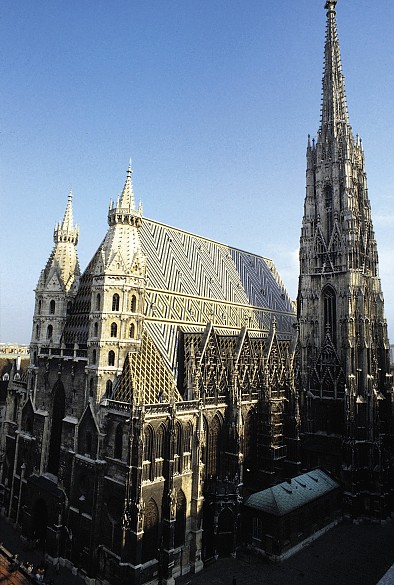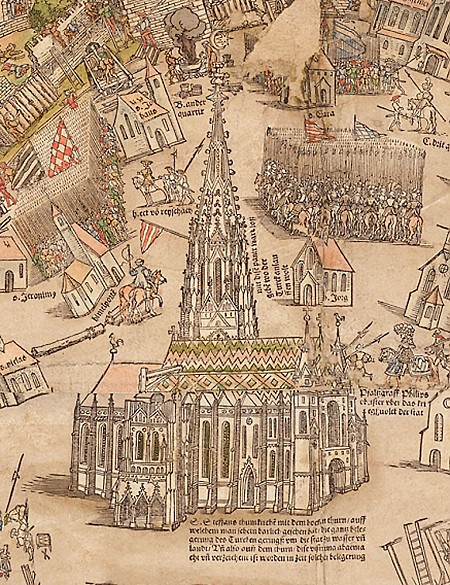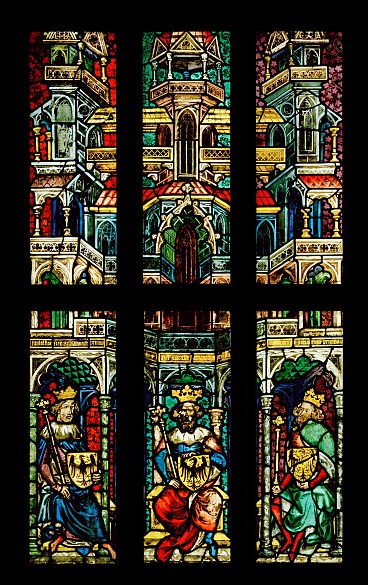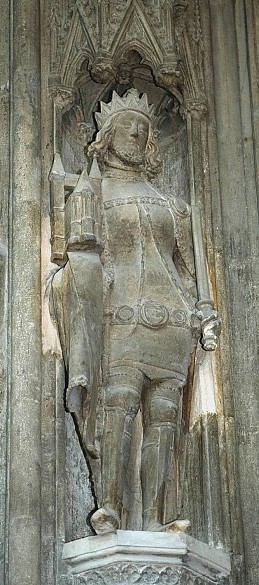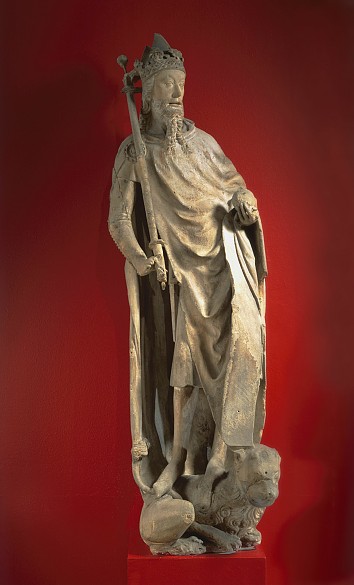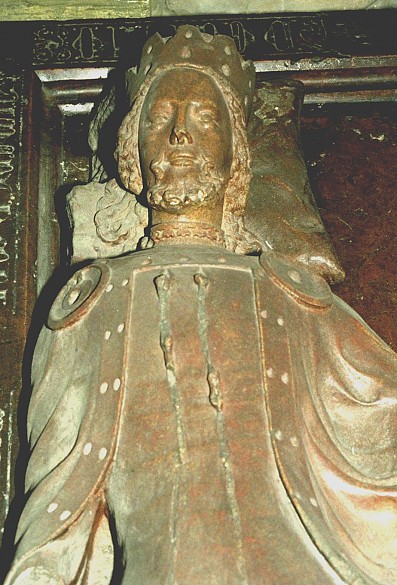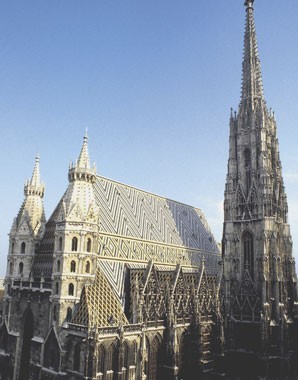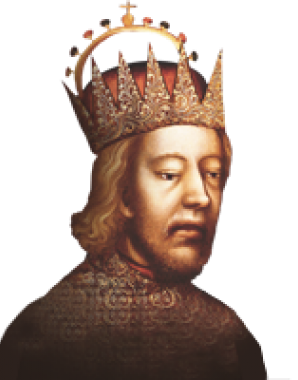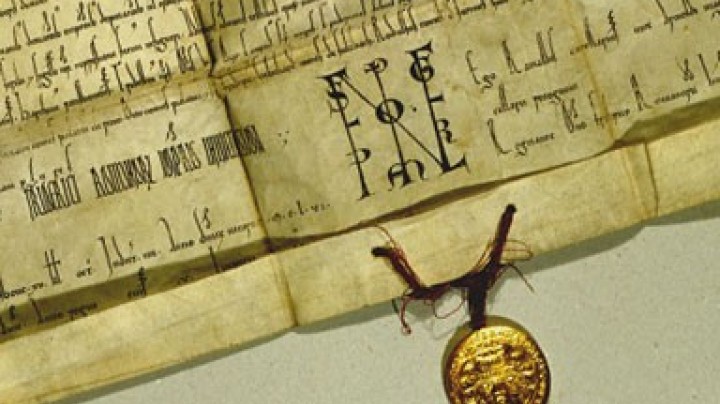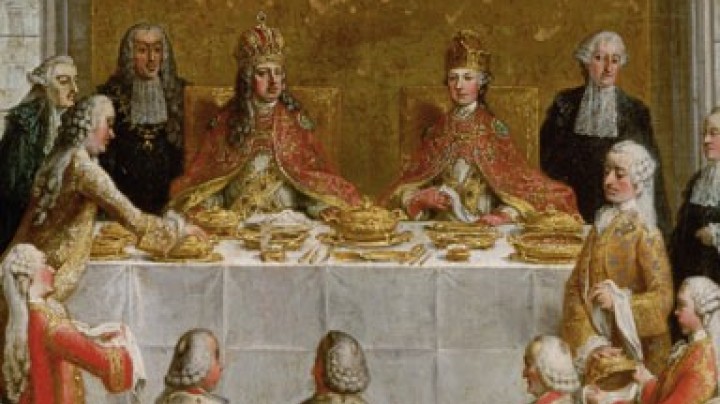A cathedral without a bishop: St Stephen’s in Vienna
In order to fulfil the role of a capital city in medieval times, Vienna lacked one fundamental attribute: while it was an important major city, it was not the seat of a bishopric, being within the ecclesiastical jurisdiction of the Prince-Archbishop of Passau. St Stephen’s was the foremost church in the city, but ranked only as a parish church.
Hence the first endeavours to found a bishopric in Vienna date back to the time of the Babenbergs. The large-scale reconstruction of St Stephen’s in late Romanesque style under Ottokar II Přemysl after the fire of 1258 also pursued this objective.
St Stephen’s was also the focus of the Habsburgs’ aspirations to demonstrate their sovereign status once they had assumed power in Austria. Albrecht I began as early as 1304 by building a new chancel; however, the culmination came under Duke Rudolf IV. This ambitious Habsburg sought to make Vienna a pre-eminent princely residence and capital city with St Stephen’s as the Capella regia Austriaca, the court church of the Austrian sovereign princes and thus the religious centre of the land.
The backdrop for this was the rivalry with the dynasty of Luxembourg: Emperor Charles IV was at the time expanding his royal residence at Prague into a capital of European significance. One of his stratagems was to elevate Prague in 1344 to an archbishopric, an act which launched the magnificent programme of rebuilding on the cathedral of St Vitus on the citadel in Prague.
Rudolf’s plan to make St Stephen’s into a bishop’s seat was balked by Passau’s resistance, for the bishop feared – justifiably – that this would diminish his diocese. Nonetheless, Rudolf found a way of endowing St Stephen’s with a special status. In 1359 he managed to obtain papal affirmation for founding a collegiate chapter, an association of 24 priests robed in cardinal red, headed by a provost in bishop-like vestments. By placing the collegiate chapter directly under the pope he removed it from Passau’s influence. Thanks to shrewd moves on the complicated chessboard of canon law, in 1365 he eventually succeeded in transferring his endowment onto St Stephen’s, thereby elevating its status.
This was reflected in the architecture of the church. In 1369 Rudolf initiated a large-scale programme of rebuilding that would include all the symbols of a sovereign’s church: a princely gallery above the west portal was framed by a double-storey ducal chapel which contained the reliquaries and their treasures, and a royal crypt was constructed as the tomb of the sovereign. The plans also included four towers, a feature that was actually an architectural prerogative of an episcopal church. Rudolf’s integration into his plans of parts of the late Romanesque predecessor (the immense main portal known as the ‘Giant’s Door’ and the westwork) lent historic monumentality to his building programme.
Rudolf’s death palpably extinguished the Habsburgs’ interest in St Stephen’s, and the Viennese citizenry took over the initiative for further building work on the church. Not until Frederick III, who took Rudolf IV as his model, did any Habsburg participate in extending the church. Frederick commissioned the start of work on the north tower, although the special memorial to this Habsburg is his tomb in the Apostles’ Choir in the cathedral, a further striking example of the Habsburgs’ dynastic programme in the late Middle Ages.
Frederick also finally managed to bring the prestigious agenda of his ancestor Rudolf to a successful conclusion: in 1469, the Pope granted Frederick the elevation of Vienna to a bishopric. The Vienna diocese was at first minimal in size – it was smaller than the present area of the inner city – but the Habsburgs had prevailed: the cathedral of St Stephen had a bishop at last.
